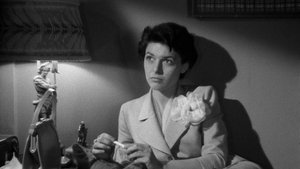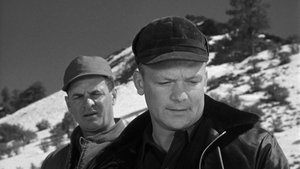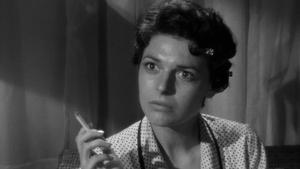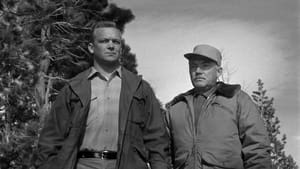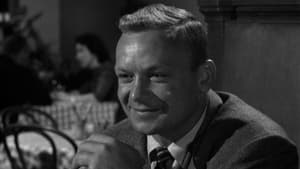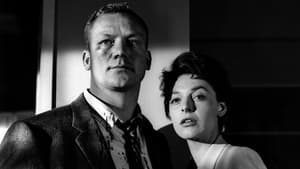Video Sources 0 Views
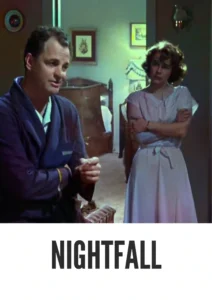
Synopsis

Immerse yourself in the shadowy world of Nightfall, a gripping crime drama from 1956, meticulously colorized to amplify its visual impact and narrative tension. Starring Aldo Ray as the everyman caught in a web of deceit and Brian Keith as the relentless adversary, this film offers a suspenseful journey through betrayal, memory, and desperate survival. Ideal for aficionados of classic thrillers and those drawn to intense character studies, this HD download revitalizes a forgotten gem of the genre, making it accessible to a new generation of viewers.
Nightfall centers on James Vanning (Aldo Ray), a commercial artist haunted by fragmented memories of a fateful hunting trip. As he tries to piece together the events, he finds himself pursued by two ruthless men, Red Eye (Brian Keith) and John (Rudy Bond), who believe he knows the location of $300,000 in stolen money. Vanning has no recollection of the robbery or the money.
As Vanning desperately tries to evade his pursuers and understand his past, he meets Marie (Anne Bancroft), a sympathetic woman who becomes entangled in his plight. Together, they navigate a treacherous landscape of lies and violence, with Red Eye and John closing in at every turn. The film culminates in a tense showdown where Vanning must confront his buried memories and fight for his life. Nightfall is a compelling thriller that explores themes of identity, guilt, and the struggle for redemption.
The film boasts a strong cast of actors who deliver compelling performances:
-
Aldo Ray as James Vanning
-
Brian Keith as Red Eye
-
Anne Bancroft as Marie
-
Rudy Bond as John
-
James Gregory as Ben Fraser
Nightfall firmly resides within the crime drama genre, infused with elements of film noir and suspense. Its dark atmosphere, moral ambiguity, and focus on characters caught in desperate circumstances align with the conventions of film noir, while its tightly plotted narrative and relentless tension create a gripping suspenseful experience.
Released in 1956, Nightfall reflects the anxieties and moral complexities of the Cold War era. Crime films of this period often explored themes of paranoia, betrayal, and the corrupting influence of greed, mirroring the broader social and political concerns of the time. Nightfall, with its tale of hidden money and ruthless pursuers, taps into these themes, offering a dark and compelling reflection of its era.
This colorized version of Nightfall has been meticulously restored using state-of-the-art digital techniques, enhancing the visual depth and emotional resonance of the film. The colorization process involved careful analysis of the original black and white cinematography, with particular attention paid to recreating the mood and atmosphere of each scene. While the specific software used remains confidential, the techniques included advanced algorithms for color palette selection, facial recognition, and texture mapping. This painstaking process breathes new life into the characters and settings, making the story even more immersive for contemporary viewers.
-
: Jacques Tourneur
-
: Stirling Silliphant
-
: David Goodis’ novel
-
: Burnett Guffey
-
: Grant Whytock
-
: Copa Productions
-
: Columbia Pictures
-
: 78 minutes
-
: MP4
-
: HD (1080p)
-
: Compatible with most devices, including smartphones, tablets, computers, and smart TVs.
Nightfall (1956) is a well-regarded crime drama known for its taut direction, strong performances, and suspenseful atmosphere. Critics have praised Jacques Tourneur’s skillful use of shadows and camera angles to create a sense of unease and paranoia, as well as the compelling performances of Aldo Ray, Brian Keith, and Anne Bancroft. While it may not be as widely recognized as some of the more famous film noir classics, Nightfall remains a compelling and rewarding example of the genre.
-
: What is Nightfall about?
-
A: Nightfall is a crime drama about an amnesiac artist who is pursued by criminals who believe he knows the location of stolen money.
-
-
: Is Nightfall (1956) a well-known film noir?
-
A: While not as famous as some other film noir classics, Nightfall is a highly regarded example of the genre, known for its suspenseful atmosphere and strong performances.
-
-
: Is this version of Nightfall colorized?
-
A: Yes, this version has been professionally colorized to enhance the viewing experience.
-
-
: What makes Nightfall interesting for film noir fans?
-
A: Nightfall offers a compelling blend of suspense, atmosphere, and strong character development, making it a rewarding experience for fans of film noir.
-
-
: What is the download format?
-
A: The download format is MP4, which is compatible with most devices.
-
-
: What resolution is the download?
-
A: The resolution is HD (1080p), providing a high-quality viewing experience.
-
Watch Nightfall Today!

